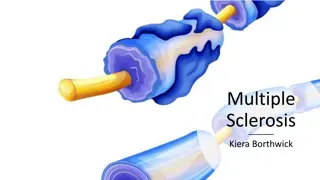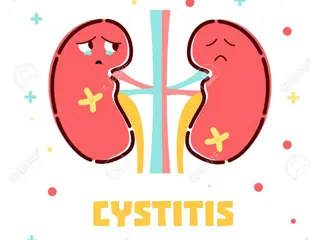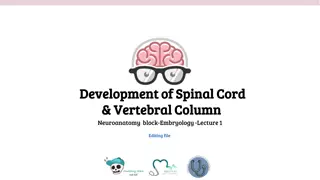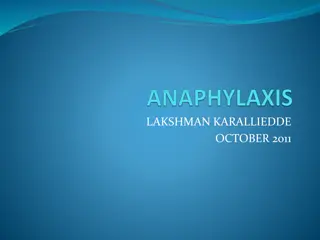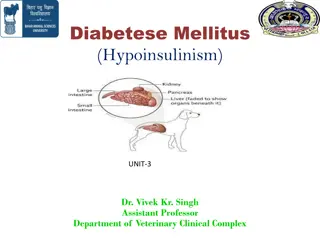Understanding Spina Bifida Occulta: Symptoms, Causes, and Treatment
Spina Bifida Occulta is a common neural tube defect, usually mild and hidden. It affects the lumbosacral area, characterized by vertebral arches not fusing, resulting in spinal processes defects without external protrusion. Common features include dimples, hairy patches, and normal spinal cord. Neurological impairments can lead to muscle imbalance and foot deformities. Causes may include tethering of the spinal cord. Diagnosis involves imaging tests like X-rays, MRI, and CT scans. Treatment varies based on symptoms, ranging from physiotherapy to surgery if neurological deficits worsen.
Download Presentation

Please find below an Image/Link to download the presentation.
The content on the website is provided AS IS for your information and personal use only. It may not be sold, licensed, or shared on other websites without obtaining consent from the author. Download presentation by click this link. If you encounter any issues during the download, it is possible that the publisher has removed the file from their server.
E N D
Presentation Transcript
SPINA BIFIDA OCCULTA
SPINA BIFIDA OCCULTA Spina - Latin: Spine Bifida Latin: Split Occulta Latin: Hidden
Spina Bifida, in general, is defined as a neural tube defect (NDT) that results when the inferior neuropore does not close. Spina bifida occulta is the mildest and the commonest. In this, the failure of the vertebral arches to fuse results in bifida spinous processes of vertebrae. It has no visible defect to the external (no protrusion). It occurs most at the lumbosacral area. There is a dimple, hairy patch, dark spot or swelling over affected area. Spinal cord and nerve usually normal.
The following some are important features- 1) Commonest site- This is common is lumbosacral spine: S1 being is the commonest site. 2) Externally- the skin may be normal or there may be tell tale signs in the forms of a dimple in the skin, a lipomatous mass, a dermal sinus or a tuft of hair. 3) Neurological impairment- It is not related to the severity of the bone defect. The commonest manifestation of neurologic involvement is a muscle imbalance in the lower limbs with selective muscle wasting. This lead to foot deformities because of muscle imbalance, common ones being equinovarus or cavus.
CAUSES- The causes of impairment may be- Tethering of the cord of the lumbar surface of the skin by a fibrous membrane ( membrane reuniens). Tethering of the cord to the filum terminale. Bifid cord, transfixed with an anteroposterior bone bar ( diastematomyelgia). CLINICAL PRESENTATION- Spina bifid occulta present with- Depression or dimple in the lower back.
A small patch of dark hair. Soft fatty deposits. Port-wine nevi (deep red purple macular lesion). DIAGNOSTIC TEST / LAB TESTS- Before birth- Alpha- fetoprotein blood test when 16-18 weeks pregnant. Ultrasound of the spine. After birth- X-ray MRI CT Scan
TREATMENT- A symptomless patient, where the lesion is dected on an x-ray taken for some other problem, needs no treatment. Cases presenting with backache respond to physiotherapy. Cases presenting with a neurological deficit needs to be evaluated regarding the cause and likelihood of worsening of the neurological deficit. MRI is the imaging modality of choice. Surgical treatment may be required in some cases.
Orthopaedic treatment is the same as for a paralytic limb; i.e Prevention and correction of deformities. Using residual muscle power for more useful functions by tendon transfers and joint stabilization. Giving support for walking. i. ii. iii.





